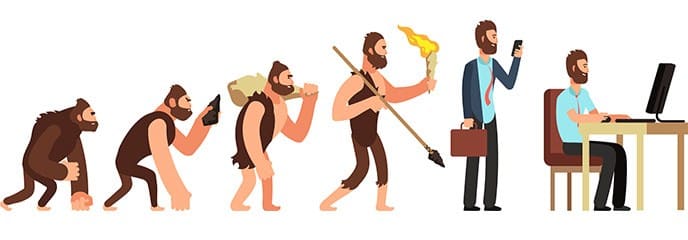Since time immemorial, humans have been embroiled in constant progress and innovation in all aspects of life. Since the birth of the office, we have been obsessed with increasing the productivity and efficiency of our employees at all levels of the company hierarchy. The 60s kicked off industrial automation. By the early 2000s, we had completed business process automation, and we were warming up to the idea of digital transformations. Two decades later and the wave of intelligent enterprises (IE) is upon us.

This new technological epoch is perhaps the most impressive one. It is expected to aid the office environment in a fluid and adaptive manner. Consequently, boosting productivity at all levels and times possible. But what is IE, and how does one go about integrating it into their work environment?
There are three key features of such a system; the ability to collect and compile data, simulate options and direct resources that were most effective, respond to changes in the marketplace, and pivot the business to experience the right outcomes. Such visibility, focus, and agility aim to use automation to handle repetitive tasks with maximum efficiency. Thus, elevating employees to a level where they perform higher-value tasks.
Technologies such as artificial intelligence (AI), machine learning (MI), Internet of Things (IoT), and analytics all fall under the ambit of IE. Hence it is important to understand how they function within the workspace. These intelligent technologies are just one part of an overall framework consisting of an intelligent suite and a digital platform. The relationship these three share is outlined in the image.

Using these three foundational tools, you can develop your vision for what you would like your business to look like. This would require end-to-end integration of processes integral to the business. Then, expert advice contextualize the data allowing for optimization of the performance of the algorithms. Finally, embedding these tools in the firm’s operational core and its solutions package. Therefore, avoiding purchasing and building a separate platform with additional costs.
With the basic outline set on what entails IE and what processes and set-ups your firm would be required to adopt to boost productivity, it is important to look at the innovations of its immediate predecessor – the age of the digital transformation. This would allow for greater appreciation of the strides in technology being continually made. These updates boost productivity and make our world better and smarter.
Digital transformation is defined as integrating digital technology into all business areas. Thus, resulting in fundamental changes to how businesses operate and how they deliver value to customers. Furthermore, it is a cultural change that requires organizations to continually challenge the status quo and experiment often. Therefore, get comfortable with the failure of incorporating and transitioning to digital infrastructure. The framework for this varies on factors such as each firm’s needs. Still, common characteristics include customer experience, operational agility, culture and leadership, and workforce enablement, with the integration of digital technologies being the cornerstone of this framework.

However, the most important shift required is one of the company’s mindsets and its culture. Even an article from the Harvard Business Review stresses the importance of adapting to digital transformation technologies. Failure to do so will only exacerbate any flaws already within the operational core of the company. Companies group their employees into three groups; the old-timers, the rule followers, and the lone wolves. It is important to slowly ease all three groups into a digital work environment with the experience tailored to how they prefer to operate.
For all its prowess and promises to revolutionize the workspace, digital technologies are still heavily reliant on the workers being open to such a change. With intelligent enterprises, this problem is eliminated. Rather than being used by the employees as a mainstay; these tools are absorbed into the company’s overarching framework. Thus, automatically aiding each worker at every level instead of relying on an interface frequency of usage employees.
Call us and find out the changes we could provide to your company to modernize your operation, become better, run faster, and be more profitable.





